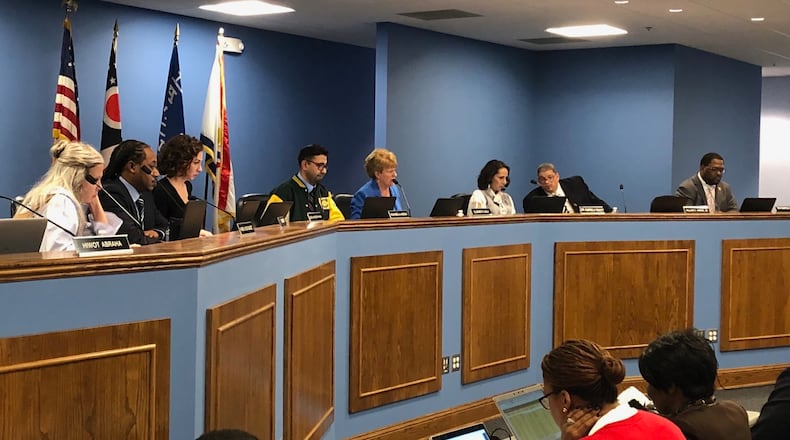RELATED: Dayton schools event connects kids with career pathways
On the 2018-19 state report card, DPS as a district received an “A” for the progress shown by its gifted students, and a “C” in the Gap Closing component, which measures performance of other subgroups of students, according to the Ohio Department of Education.
That got DPS off the list. ODE says 65 Ohio districts remain in Watch status. Locally, they include Jefferson Twp., Piqua, Trotwood-Madison, Troy and Twin Valley. Jefferson was in Watch status for three of the four subgroups, Piqua for two, and the others for one.
Dayton Public Schools still ranked in the bottom 10 of the state’s 600-plus districts in performance on state tests last year, but they moved up four spots from the previous year. They ranked in the bottom 10 in overall student progress as well, but were ahead of similar districts Cincinnati, Columbus, Akron and Toledo.
DAYTON: New school board members want to listen, be voice for others
“We continue to follow the strategic plan we created last year,” school board President Mohamed Al-Hamdani said. “We have several newly-elected board members and we are looking forward to continuing to move the district forward.”
Ohio Department of Education spokeswoman Mandy Minick said moving out of Watch status means the district as a whole is no longer required to submit an improvement plan for those student subgroups.
While DPS as a whole moved out of Watch status, the district still has eight individual school buildings on the Watch list, based on their own report card data. Minick said each of those Watch schools still has to submit an improvement plan.
SCHOOLS: Rush to change private school voucher law worries some
Minick said there is no change in funding for DPS or its schools, and no change in the level of support the district will receive from the State Support Team that works with low-scoring schools.
Ohio has a confusing web of labels for underperforming schools, some of them tied to accountability provisions in federal law. DPS, other local districts and some charter schools still have buildings that are considered Priority schools or Focus schools, based on poor graduation rates, overall report cards, subgroup performance or gap closing.
About the Author

